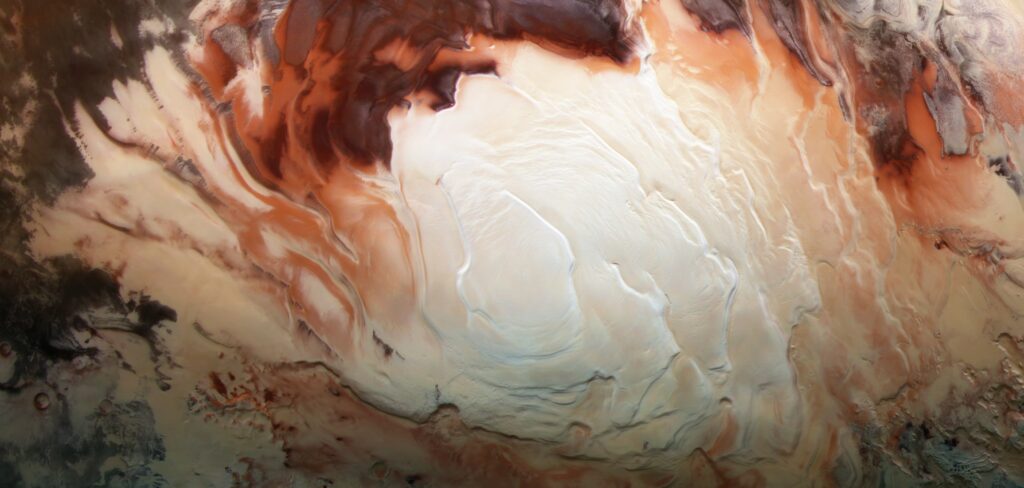Astronomers have found that Mars might have salty lakes sealed under its icy polar regions.

The low pressure that results from the lack of an atmosphere makes surface water on Mars impossible — unless it’s protected by something. That something, it turns out, exists; it lies on the Martian south pole, and you might know it as ice.
Astronomers first reported on the possibility of a subglacial lake on Mars back in 2018, and they just published a new paper admitting they were wrong. There’s not one lake on Mars, there’s several, and they’re salty — which makes them all all the more interesting for extraterrestrial life.
“We identified the same body of water, but we also found three other bodies of water around the main one,” says planetary scientist Elena Pettinelli at the University of Rome, who is one of the paper’s co-authors. “It’s a complex system.”
The discovery was made using a radar from the European Space Agency’s Mars-orbiting spacecraft Mars Express. The existence of the first lake was proposed after 29 observations made from 2012 to 2015. Now, the dataset includes 134 observations from 2012 to 2019 and makes a much stronger case for the existence of water on Mars. The first lake, observations suggest, is around 20 x 30 kilometers (12 x 18 miles), buried under 1.5 km (1 mile) of ice. Separate from the main lake, multiple bodies of water of various sizes are thought to exist.
These lakes are tantalizingly similar to subglacial lakes we have here on Earth such as Vostok Lake, although the Martian lakes are thought to be much saltier. In fact, the authors suggest that the liquid bodies are hypersaline solutions, which would explain why they can remain liquid despite the cold environment at the Martian pole. But even so it’s not implausible that they can support life.
A few billion years ago, Mars was warm and wet, much like Earth. But after its atmosphere slowly dissipated, Mars lost its water and turned into the dry desert we see today. However, there are still signs of water on the Red Planet.
Both satellite data and on-site analysis have supported the existence of former water bodies on Mars, this is the first time researchers have found solid evidence of actual bodies of water on Mars.
Whether this is an actual lake or something more akin to a sludge or slush is up for debate, and the lakes themselves are still debated. Jack Holt, a planetary scientist at the University of Arizona in Tucson, told Nature that he doesn’t think these are lakes.
So, for now, we’re left with a stronger, but still-not-fully-proven case for lakes on Mars. Thankfully, there may soon be additional data to help settle the debate. The Tianwen-1 mission will enter Martian orbit in February 2021, deploying a rover on its surface.
But it’s hard not to get excited at the possibility of liquid water on Mars because where water exists, life can also exist. If there really is life in these salty waters, it could take different forms, but it will almost certainly be microbial. Most scientists speculate that anaerobes (extremophile microorganisms that don’t need oxygen) are the most likely candidates, but the existence of oxygen-breathing microorganisms is also possible.
“The water bodies at the base of the (south polar layered deposits) therefore represent areas of potential astrobiological interest and planetary protection concern,” the study concluded, urging for more exploration studies to analyze these subglacial bodies.
Journal Reference: Multiple subglacial water bodies below the south pole of Mars unveiled by new MARSIS data, Nature Astronomy (2020). DOI: 10.1038/s41550-020-1200-6 , www.nature.com/articles/s41550-020-1200-6






